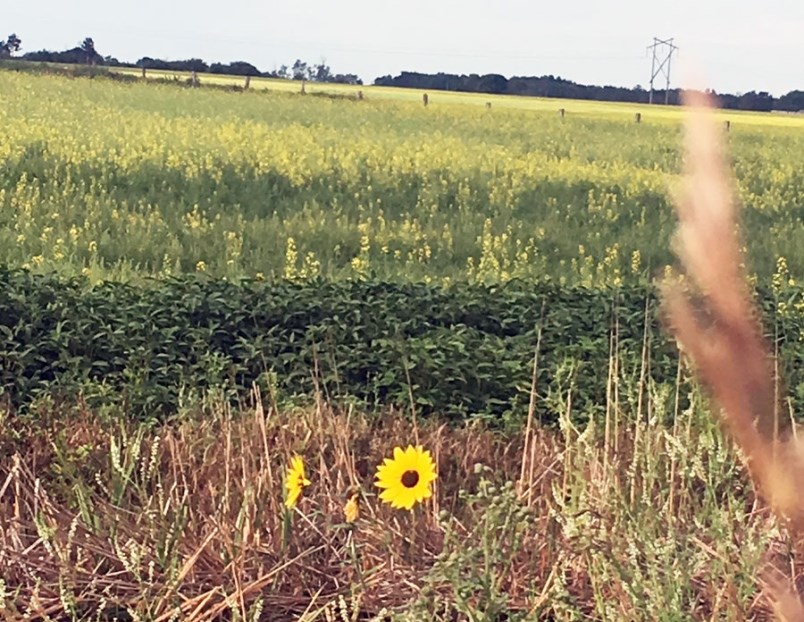Crops are advancing rapidly with the warm and dry conditions. Rain is needed in most areas to sustain crops and replenish soil moisture.
Harvested has started in winter cereals, barley, and peas.
Swathing or pre-harvest applications have started in early seeded spring cereals and canola.
Fist cut hay is nearing completion; yields are below normal. Regrowth has been limited due to dry conditions, and a second cut may not be possible in some areas.
Southwest Region
Little to no rain over the past week in most of the southwest region. Areas close to Riding Mountain National Park such as Eden and Wasagaming received 15 to 26 mm. In general, most crops are looking good but require rain. Hot and dry weather is turning crops quickly.
Winter wheat and fall rye are close to harvest. There are reports of some early seeded fields being harvested. Some fields will be desiccated this week. Most spring wheat is in the soft dough stage. Harvest has started in some early seeded barley. Too early to give yield estimates.
The majority of canola is finished flowering. Some fields with low seasonal rainfall have short plants with aborted pods. There are some reports of Bertha armyworm larvae in the southwest corner of the province but no reports of spraying yet. Most traps are down now.
Peas are ripening well in most areas. Most of the crop looks excellent except for diseased areas in some fields with low spots.
More than 80% of sunflowers are flowering (R5) stage, and corn is tasseling. Both crops are doing well and benefiting from heat.
Soybean crop is variable throughout the region depending on moisture levels. The majority of the crop is at the R4 stage. No reports of any disease or insect issues at this point.
Second cut on dairy hay has started and most first cut beef hay is complete. First cut hay yields ranged from 50 to 95 per cent of normal. Producers in dry areas are looking for feed sources and baling whatever they can find. Many of the first cut hay fields are currently dormant so prospects for a good second cut dwindle as the weeks progress. Dugouts are 50-60% full.




